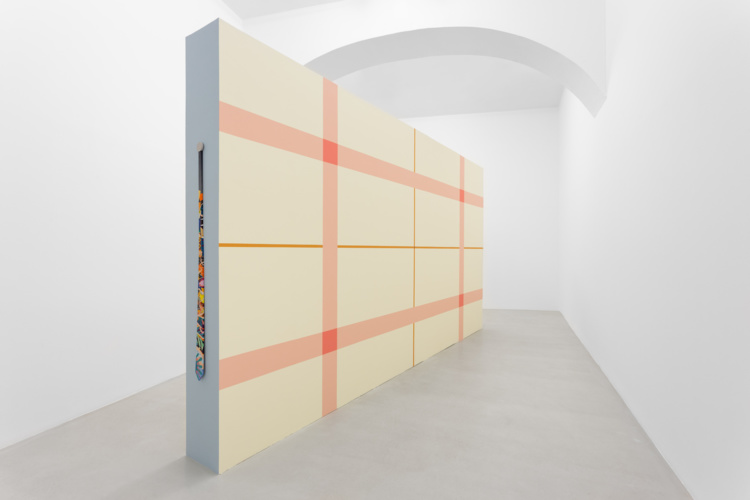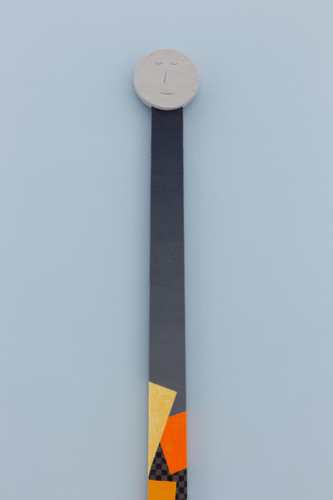Rodrigo Hernández: Moon Foulard
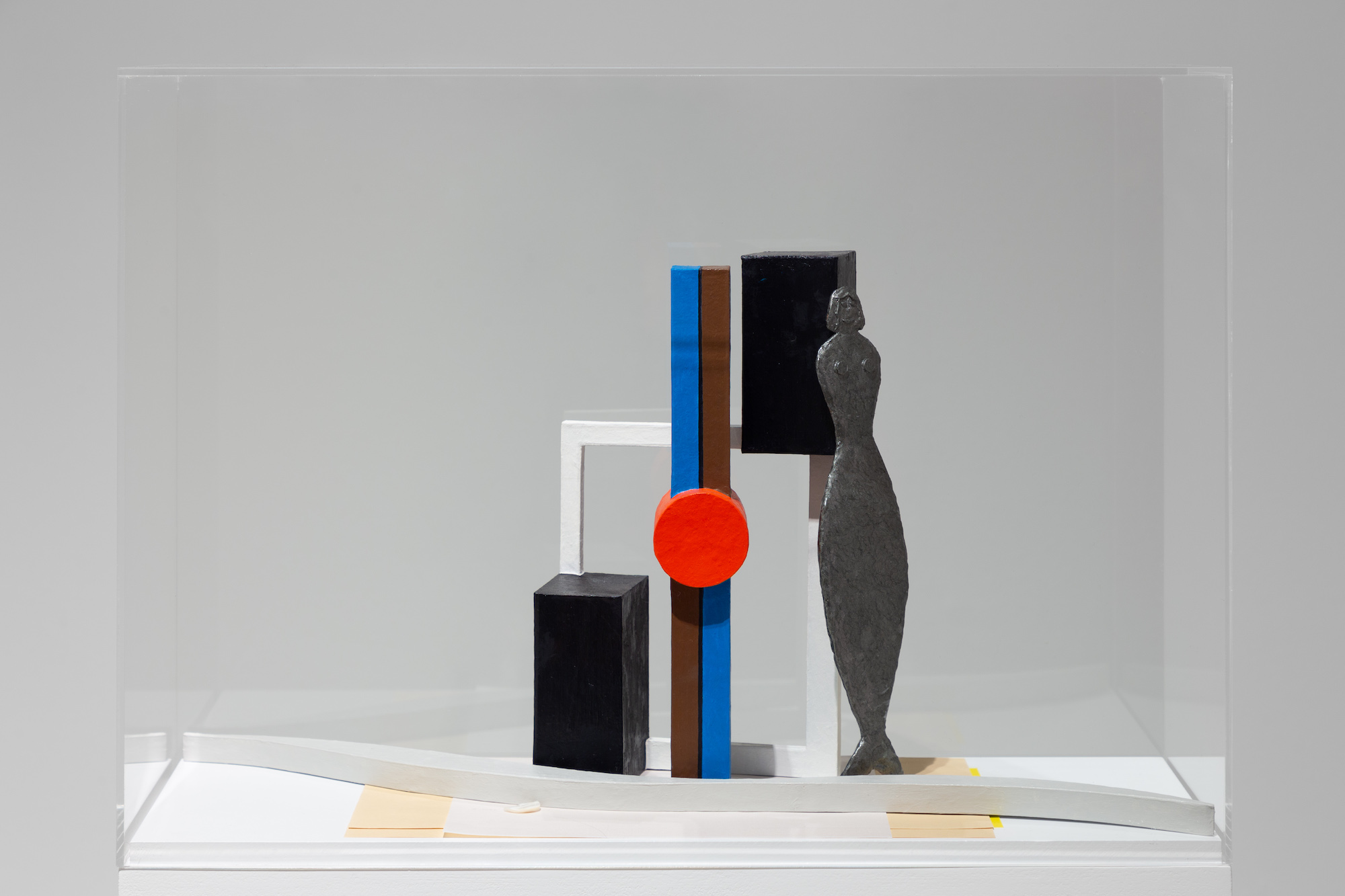
Butterflies In Your Stomach
The exhibition Moon Foulard by Lisbon-based Mexican artist Rodrigo Hernández at Fidelidade Arte presents itself as a dreamy pastel-coloured conversation between the artist and the work of Italian fashion designer Emilio Pucci, or perhaps rather like an aperitivo play date where Hernández interprets in his own visual language the chic and extravagant world of the “prince of prints”.
“Gaiety is one of the most important elements I brought to fashion. I brought it through colour” is one of the most famous quotes by Pucci (1914–1992), a Florentine charismatic figure who wore tight clothes and pushed psychedelic harlequin silk jerseys, stretchy or floating, into fashion like fireworks, growing his business from small family shop to an international fashion affair. Throughout his career he dressed celebrities such as Lauren Bacall, countess Jacqueline de Ribes, Jackie Kennedy, Sophia Lauren, Gina Lollobrigida, Madonna, Marilyn Monroe, and Elizabeth Taylor, and was one of the first to use a logo on his garments. Pucci was also an athlete and a politician, and he served in WWII as a pilot for the Italian Air Force. He’s also known to have helped Mussolini’s eldest daughter to save her husband, and then herself, for which Pucci spent time being tortured in jail. The story says he got his break into the fashion industry when a friend of his wore his design, a one-piece ski suit, and was spotted by a Harper Bazaar’s photographer. Diana Vreeland, then editor-in-chief of the magazine, commissioned Pucci some more. Like painters often do, Pucci absorbed everything around him like a sponge, from contemporary culture, to landscapes, and architecture, and proposed a bright vision of life through his scarves, dresses, and resort-wear designs as a result. Some said it was bad taste, too loud an aesthetic, but many would say that it was bad taste done right, with a love for life—picture yourself leisurely catching the caprese sun wearing colourful geometry—be happy.
Hernández rummaged through photographs from Pucci’s archives and advertising material, and merged his own world within, rather naturally. The exhibition includes work on paper, mural, papier-mâché, and sculpture, playfully inhabiting the space of the galleries, covering its walls with soft and bright colours as if they were fabrics, translating creatively wearable fashion into a scenery. Although inspired by Pucci’s world, Hernández’s mischievous hand is visible throughout. In the first room, the artist covered the walls with large triangles, so large they look like fat stripes, with colours from Pucci’s palette (Pucci actually had names for his pinks, blues, and turquoises…). Running between each stripe is a band of images, like an unrolled film, inspired by Pucci’s universe: skiers, skaters, a man in a suit walking his dog etc. Drawn by Hernández, these pictures seduce with a refreshing childish enthusiasm, locating them between fashion and almanac illustrations, all absolutely delightful.
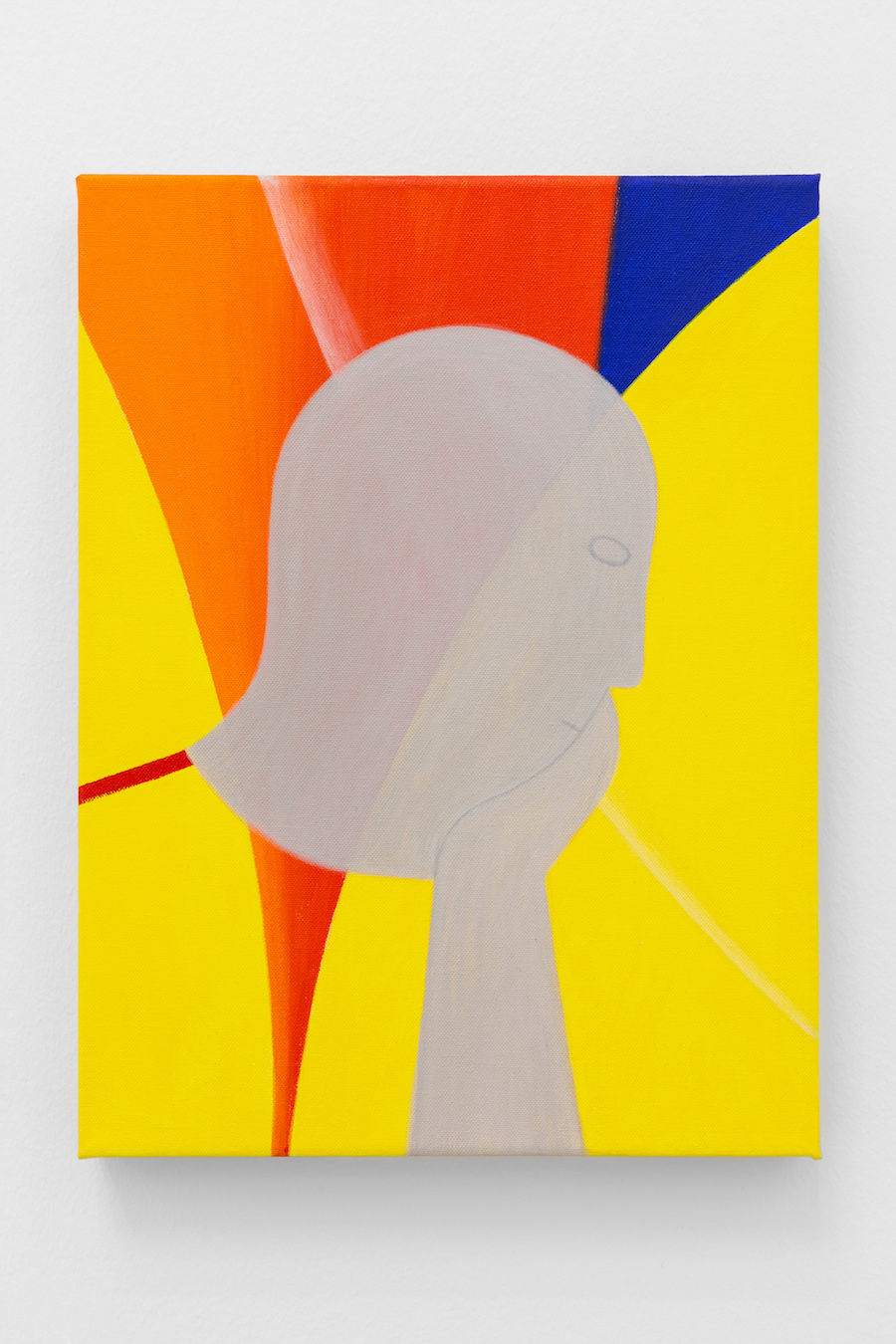
In the second room, on a plinth, is Moon Foulard (2021), a careful small installation of objects made of cardboard and papier-mâché. One of it is trompe l’oeil metal, a preciously round-formed representation of a mermaid, and the rest is composed of geometrical blocks and shapes. Just like Pucci’s, Hernández’s work packs stories, myths, and emotions in simple coloured geometry, bypassing your cerebral self and speaking directly to your body. Here the installation allegorises one of Naples’s foundational myths (Pucci was born in Naples), the one where the city was created from the tears of mermaid Parthenope, whose love was rejected by Ulysses. If Pucci’s universe abounds with love, romantic gestures, mystery and this feeling of butterflies in the stomach associated with idealised love, Hernández’s rendition eagerly adds some affable figuration to the mix, filtering it through his own ingenious mannerism. In both cases, there is the idea that simple patterns can pack a rich and romantic story, and diffuse it like New Age crystals.
Further in the show is Moon Tie (2021), a 160 cm long cardboard and papier-mâché tie topped by a gently smiling moon-like face. Hernández pointed out that ties are the only frivolous pieces of clothing associated with men’s formal wear, the one place that allows colour and self-expression. This tie doesn’t disappoint, its patterns could be described as a subaquatic Kandinsky motif, with organic algae-like forms peeking through lines of yellows, swirls of oranges, and blue-dots set against a starry night-like background. Suspended on the side of a diagonal wall installed in the middle of the space (painted with softer colour blocks), it beams its satisfaction to the passing visitors. If anything, the whole exhibition acts as a pick-me-up for tough times, or more simply as an ode to good times—something Hernández laments is not taken very seriously in contemporary arts. Which poses the question about this particular art labour: Is it suddenly radical to focus on the life of another creator, and to make contemporary artworks that celebrate joy and life’s ornaments?
More studious, the last room of the exhibition, posing as a working backroom, hosts five tables, Moon Foulard (Emilio) 1–5 (2021), with subtly arched legs—think Chirico shapes—that act as glassed displays for five series of collaged compositions made in coloured pencils, acrylic paint, watercolour, and Indian ink. The tables are lit from above, and look like someone is about to examine a bunch of photos (except they are drawings) on their surfaces, in order to brainstorm a new fashion collection, create a mood board, or sort them into personal albums. Here is the rendition of some of Pucci’s skiwear, here is a speeding boat romantically sliding between a cliff and a rock in the Mediterranean Sea, here is a logo, and here is Florence’s Brunelleschi’s Dome, as seen from the roof of Palace Pucci—where Pucci established his fashion house and lived—through the varicoloured legging-wearing wavy legs of models posing for a photoshoot. Perhaps Hernández is right about the state of seriousness of the art world, but perhaps also times are changing, and we just might all be very much ready to enjoy what we can, especially when it comes with a rich backstory and atmosphere and is packed in a visual bonbon.
Cristina Sanchez-Kozyreva is an art critic, curator and writer. She is a regular international contributor to art publications such as Artforum, Frieze, Hyperallergic, and other publications including the South China Morning Post. She was the co-founder and editor-in-chief of Hong Kong-based independent art magazine Pipeline that ran print editions form 2011 to 2016 where she curated thematic issues with artists, curators and other art contributors. She has a Masters degree in International Prospective from Paris V University.
Proofreading: Diogo Montenegro.
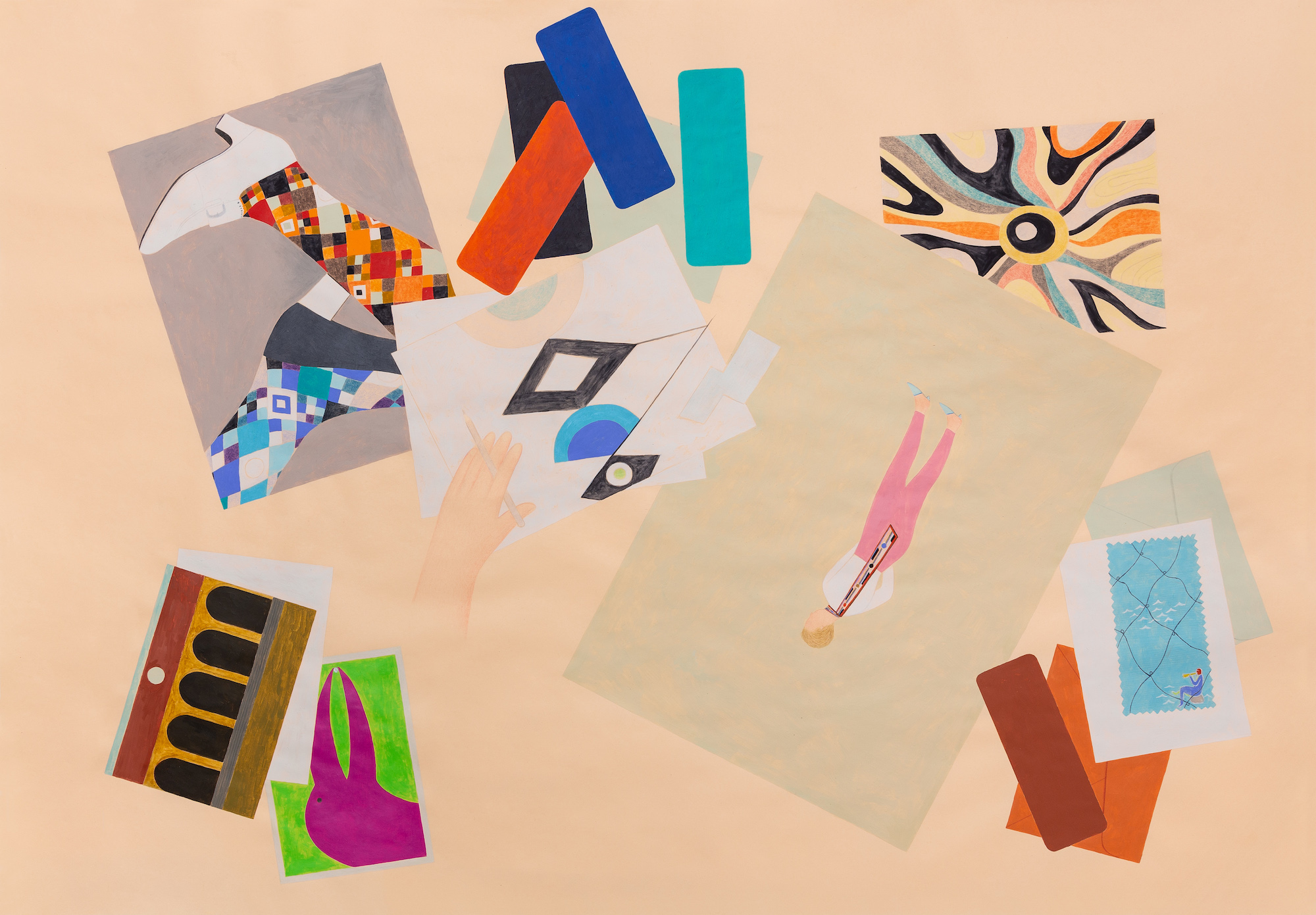
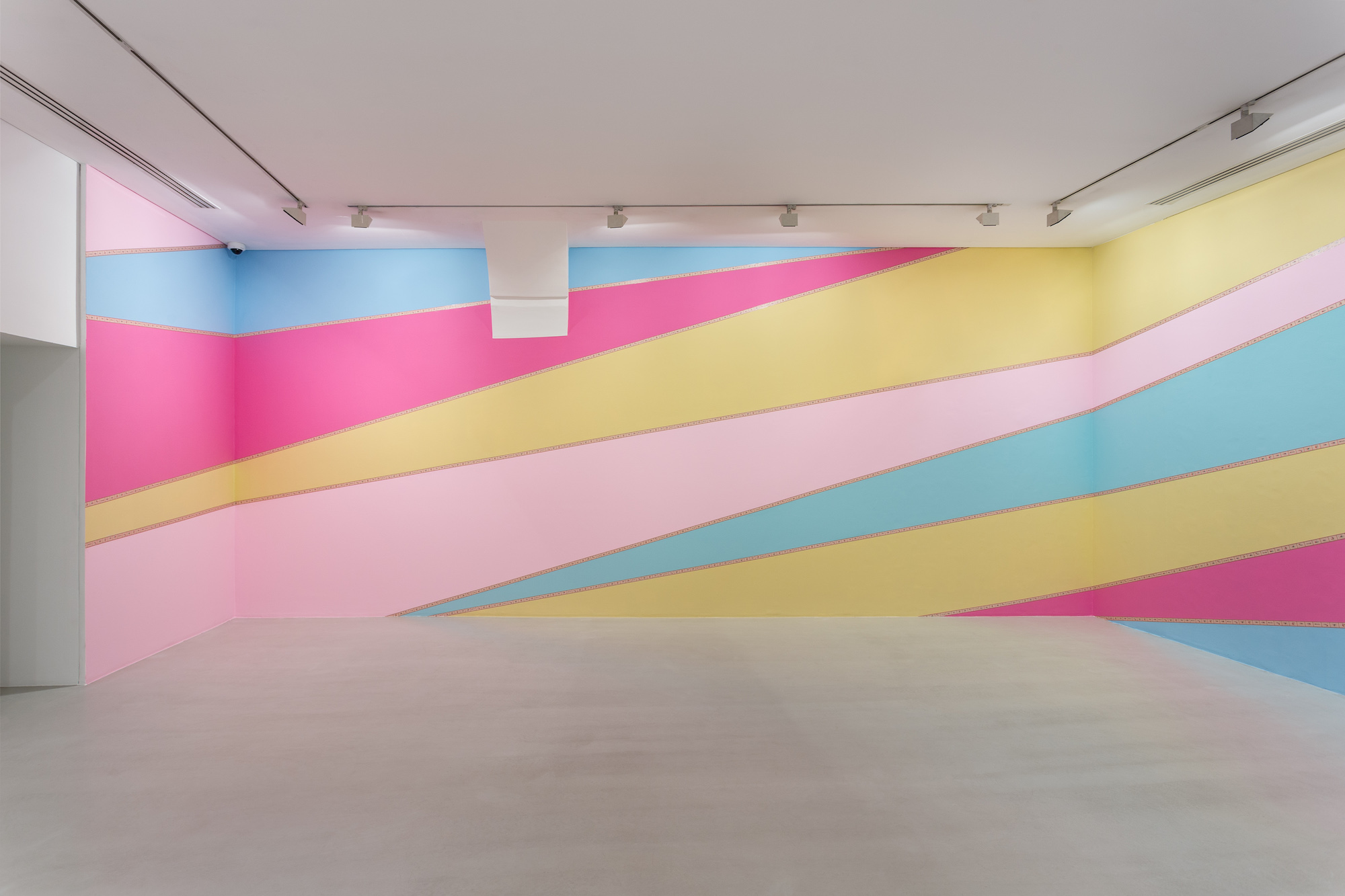
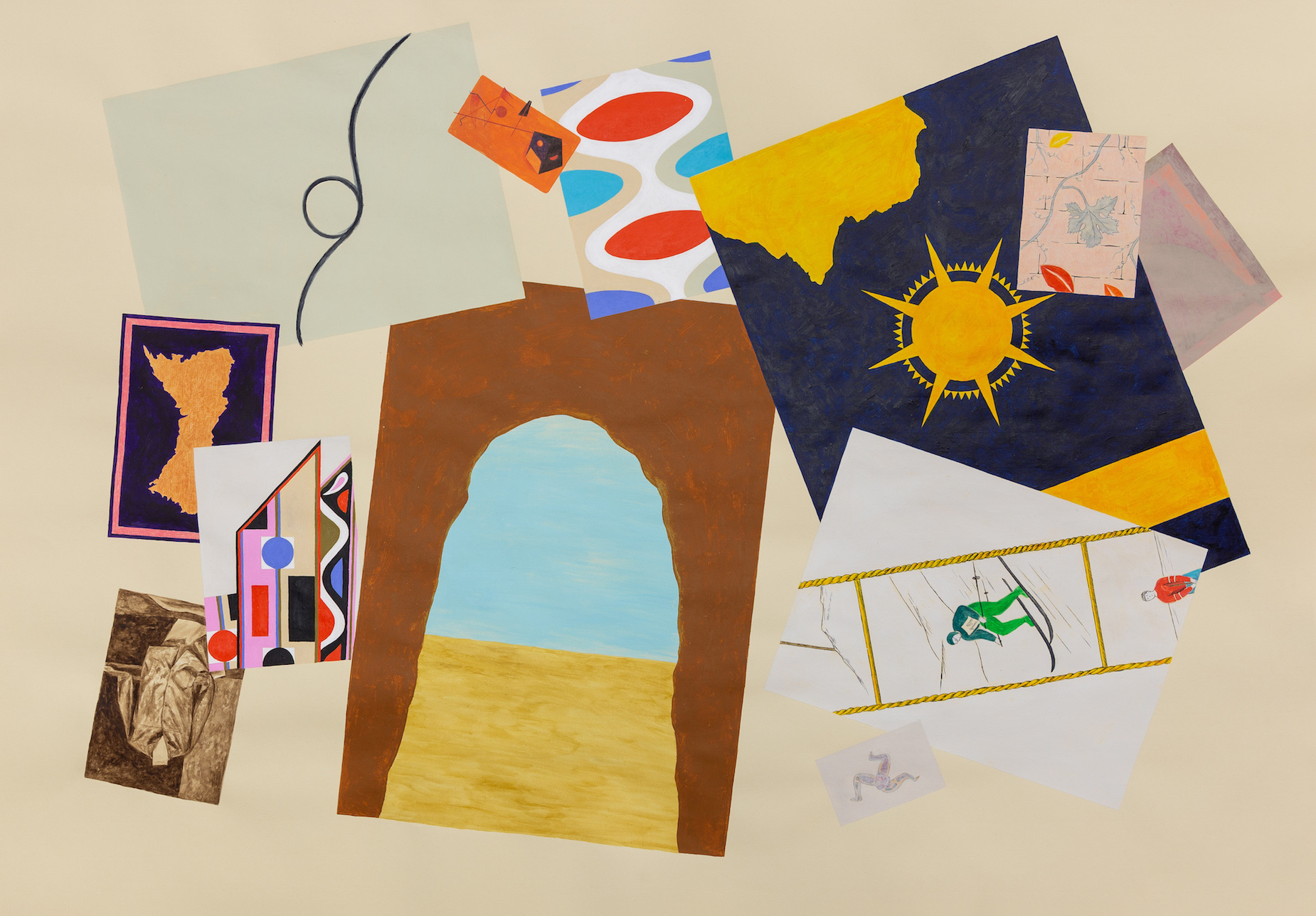
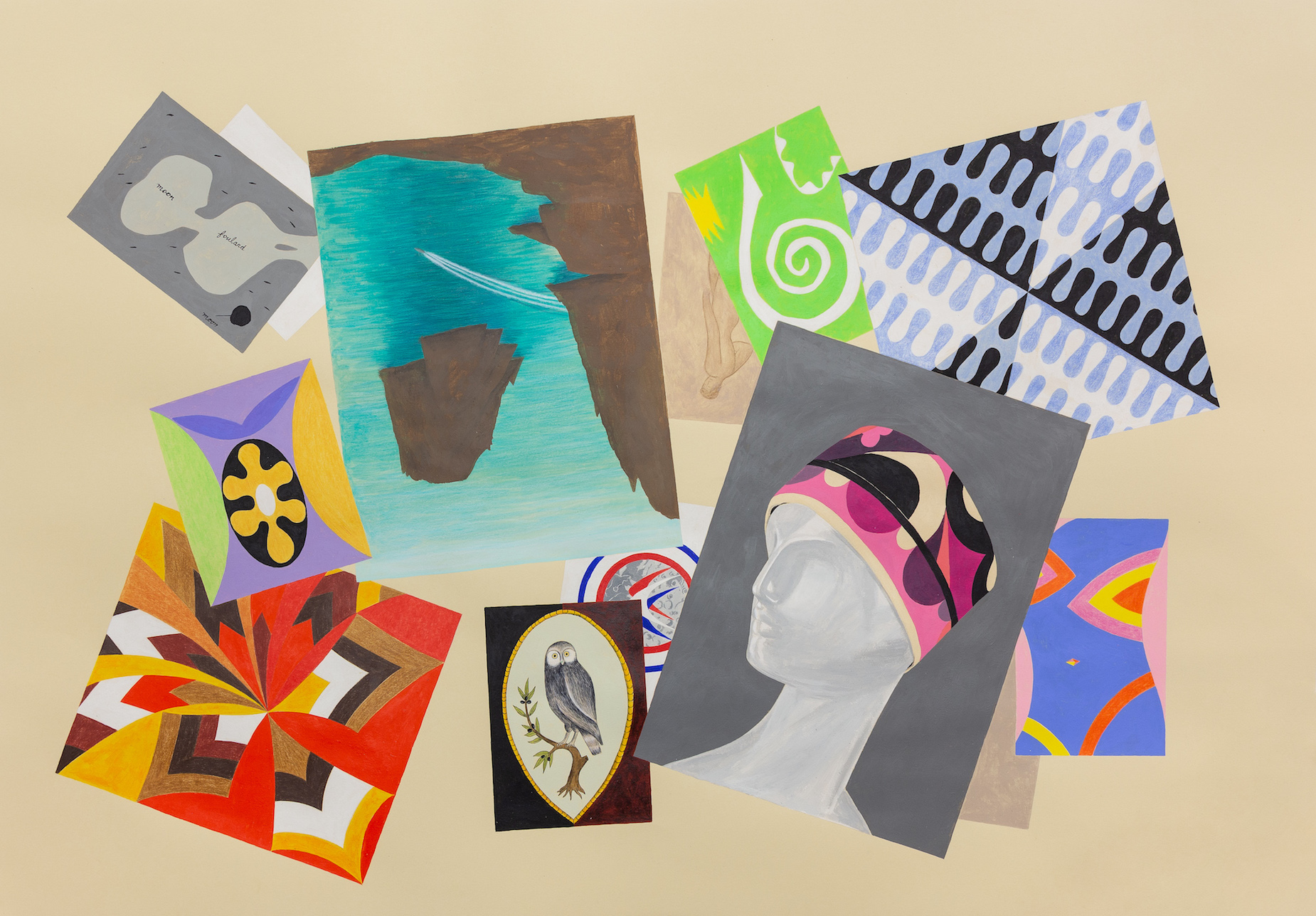
Rodrigo Hernández: Moon Foulard. Exhibition views at Chiado 8 | Fidelidade Arte | Culturgest. Photos: Bruno Lopes. Courtesy of Culturgest.

